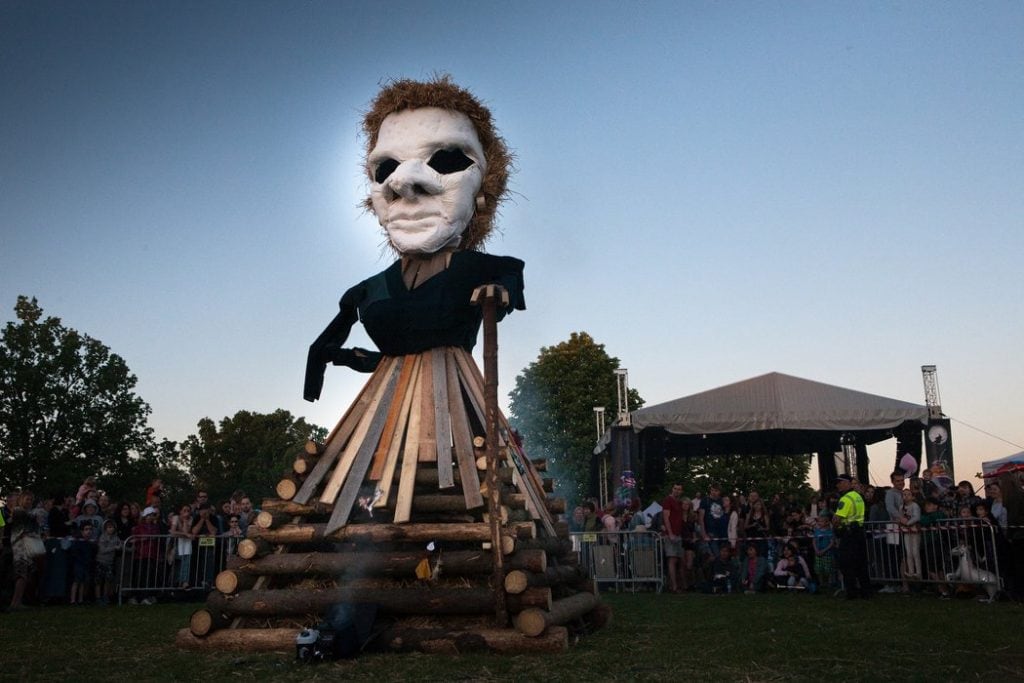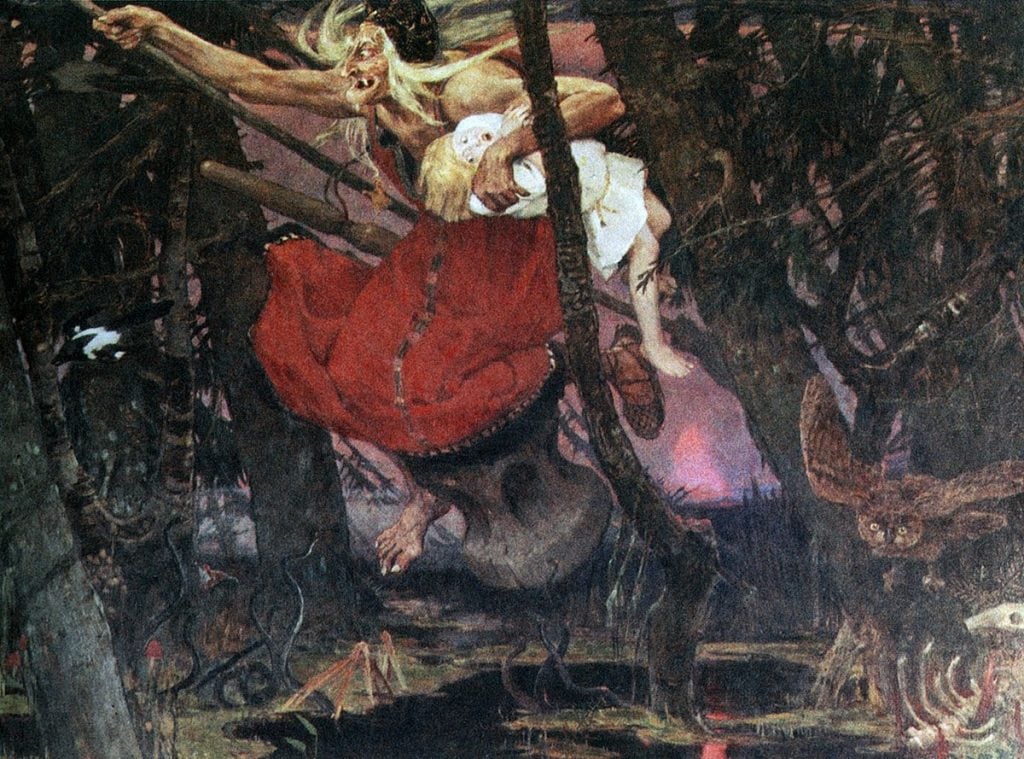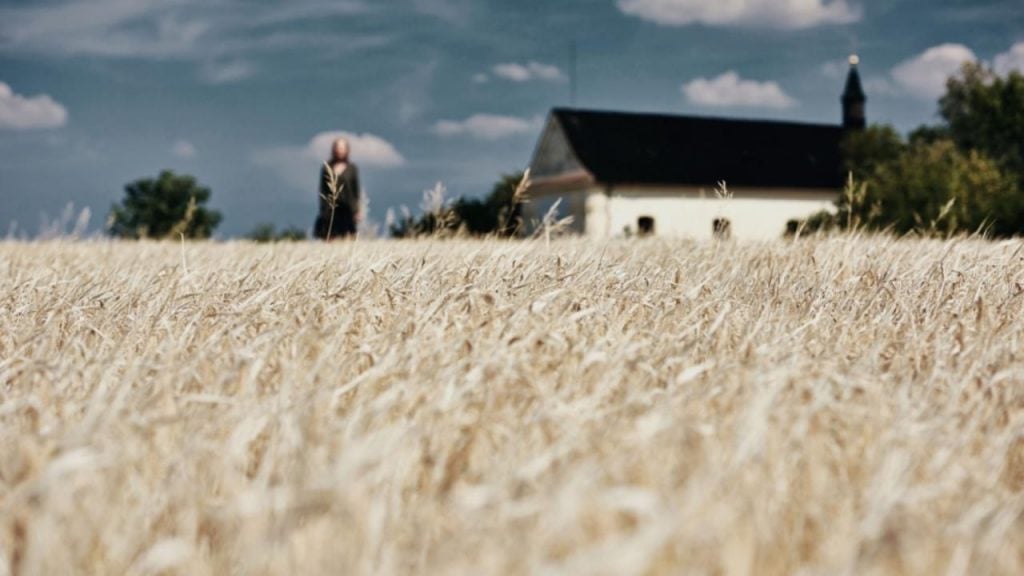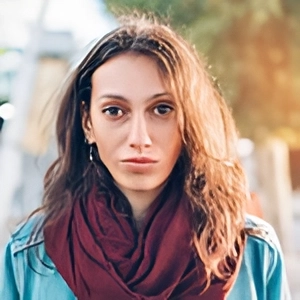The Czech čarodějnice or “Witch Burning Night” is an annual tradition similar to Walpurgis nights in other parts of the world, that sees straw effigies burned to signify the changing seasons.
In Prague and throughout the Czech Republic, the occasion is marked with festive bonfires, where roasting buřty and outdoor revelry serve as both so-long- to-winter and welcome-to-spring parties.
One of the biggest annual festivals takes place at Ladronka Park. Čarodejnice na ladronce on April 30 (14:00-21:00) promises live music, a kids’ zone, costume competitions, and a wide variety of food and drink stalls.

This year, the festivities will be presided over by the most famous Czech witch of all, Petra Černocká, the Czech actress and singer best known as the lead in the 1982 film “Dívka na kosteti” (The Girl on the Broomstick), who will perform the movie’s catchy theme song “Saxana” on the main stage.
To prepare for the big night, brush up on your (in)famous Czech witches below:
Saxana
An ’70s Czechoslovak Harry Potter, the film “Dívka na kosteti ” (The Girl on the Broomstick) is the story of Saxana, a student witch who, after repeating sorcery school for some 300 years, discovers a spell that transports her to the human realm. Featuring the hit song “Saxana” performed by the lead witch herself, Petra Černocká, the movie and song have stood the test of time.
Malá čarodějnice (Little Witch)
The dark-haired girl and her raven are the stars of the animated 1984 Czechoslovak children’s television series, The Little Witch (Malá čarodějnice). Based on a book by the German Writer Otfried Preußler, a native of Liberec, and animated by Czech illustrator Zdeněk Smetana, the cartoon depicts a good witch who despite her youthful looks is pushing one hundred, and strives to help others by doing good deeds.
Ježibaba (Granny Witch)

Known from Russian folklore and other Slavic traditions as Baba Jaga, the Czech witch Ježibaba often takes the form of a malevolent hag who dwells in the depths of the forest in an enchanted hut that stands on chicken legs. In the Czech tradition, she is said to kidnap little children and eat them, though in some tales she can be depicted as a wise and helpful or enigmatic figure.
Polednice (The Midday Witch or Lady Midday)

Polednice, or the noon witch, commonly appears in Czech folklore and other Slavic traditions as a crone or beautiful woman who turns up on hot summer days dressed in white and carrying a scythe or shears. Tales of the witch were said to have scared children away from valuable crops; she is also the personification of heat stroke. The Karel Jaromír Erben poem Polednice, the ultimate tale of parental anxiety, depicts a mother suffocating her son while trying to protect him from the “creature”. Antonín Dvořák’s 1896 symphonic poem The Noon Witch, was inspired by the poem as was the 2016 Czech horror film Poldenice starring Anna Geislerová.
Marie Schuhová
Hold your fires! This Moravian woman wasn’t actually a witch at all just accused of witchcraft after she was spotted slipping a communion wafer from her mouth into her prayer book. The aftermath of that act led to the Northern Moravian Witch trials (1622-1696), portrayed in the 1970 film Witch’s Hammer (Kladivo na čarodějnice) based on the novel by Václav Kaplický. Things didn’t end well for Schuhová who was burned at the stake along with hundreds of other women. Today a biking trail through the Jeseníky Mountains (the Witches Cycle Route) commemorates this sad chapter of Czech history.












 Reading time: 3 minutes
Reading time: 3 minutes 


























